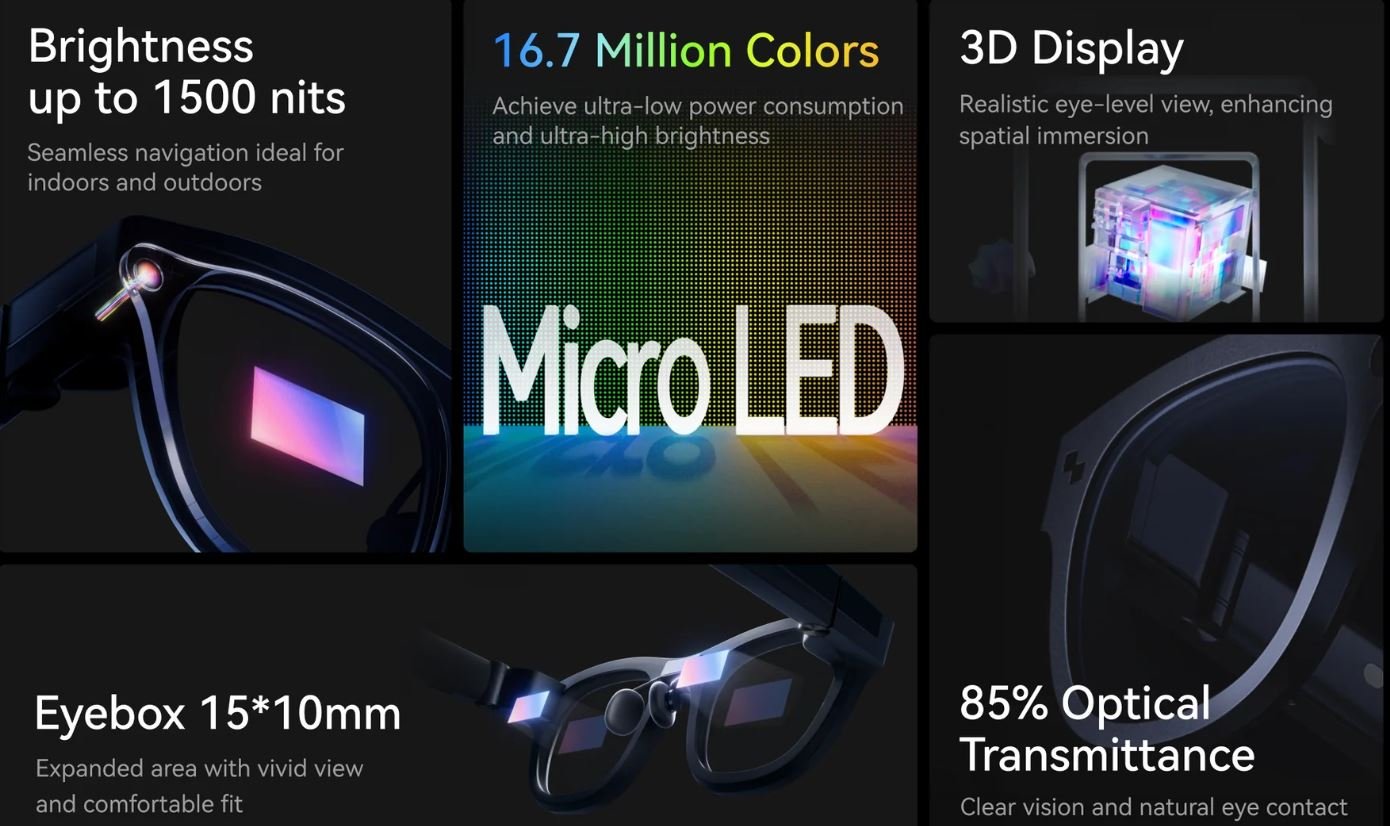Deep Dive into RayNeo X2 MicroLED Display Specifications
Augmented reality (AR) has the potential to transform how we experience the world around us. By blending digital information with our physical environment, AR creates exciting possibilities across numerous fields. For AR technology to be successful, the visuals need to be outstanding, which is where the RayNeo X2’s MicroLED display becomes a game-changer. Let’s explore what makes MicroLED such a compelling display technology and how it enhances the RayNeo X2 experience.
Breaking Down MicroLED Technology
MicroLED shares fundamental principles with OLED (Organic Light-Emitting Diode), a beloved display technology found in premium smartphones and televisions. Here’s the core idea:
- Self-Emissive Pixels: With no backlight, individual pixels produce their own light, leading to excellent black levels and stunning contrast.
- Exceptional Brightness: MicroLEDs can outshine typical OLEDs, crucial when competing with sunlight in outdoor AR applications.
- Energy Efficiency: Self-emissive pixels promote better power management, a necessity for wearable devices.
- Longevity: MicroLEDs are less prone to burn-in and degradation over time compared to some OLED panels.
Where MicroLED sets itself apart is the size of these LEDs. They’re microscopic! This has several profound advantages:
- Pixel Density: More pixels can be packed into the same area leading to unprecedented sharpness.
- Smaller Displays: MicroLED enables compact and slimmer form factors, ideal for AR glasses meant to look and feel less bulky
How the RayNeo X2 Leverages MicroLED
The RayNeo X2 sets a benchmark as the first AR glasses to adopt a binocular, full-color MicroLED optical waveguide display. Let’s break down the key specs it boasts:
- Brightness: Its peak brightness of 1000 nits allows for vivid AR overlays regardless of ambient lighting conditions.
- Contrast: With a contrast ratio of 100,000:1, details remain crisp and clear. Expect inky shadows and vibrant highlights.
- Field of View (FOV): A larger FOV translates to a more encompassing AR experience where virtual information occupies a wider portion of your vision.
- Optical Waveguide: This critical component ensures minimal image distortion and optimal light distribution from the MicroLEDs to your eyes.
- Color Reproduction: The RayNeo X2 offers a full-color display, essential for replicating lifelike AR content and realistic visuals.
Real-World Benefits of This Display
The RayNeo X2 offers more than just impressive tech specs. Its MicroLED display translates to tangible enhancements in real-world use:
- Navigation Reimagined: Imagine seamless walking or cycling navigation instructions that don’t fade even in bright sunlight.
- Contextual Information: See business hours, restaurant reviews, or historical landmark details woven directly into your field of view.
- On-the-Job Assistance: Technicians could work hands-free while viewing complex schematics or repair guides directly overlaid onto the equipment.
- Immersive Gaming: AR experiences become more lifelike and believable with visuals that hold their own against the natural world.
- Translation in Your Vision: Have foreign-language conversations with real-time subtitles provided by the AR glasses.
MicroLED's Impact on the Future of AR
The RayNeo X2 is an exciting leap, but it’s only the beginning. Let’s consider the broader implications of MicroLED on AR:
- The Quest for Normalcy: Less bulky headsets mean wider consumer appeal and faster adoption.
- Approaching Natural Vision: Higher resolution, brightness, and better color reproduction bring us closer to AR that’s indistinguishable from reality.
- Battery Barriers: Improved power efficiency paves the way for true all-day AR devices that don’t need constant recharging.
Conclusion
The TCL RayNeo X2, with its innovative MicroLED display, signifies a major step for augmented reality technology. As displays like this improve and mature, the experiences they enable will change the way we work, play, and perceive the world around us. The future of AR is bright, and MicroLED will light the way.
FAQs
A: The RayNeo X2 stands out as the first AR glasses offering a full-color, binocular MicroLED display powered by optical waveguide technology. This translates to superior brightness for outdoor use, deeper blacks with superb contrast, wider color representation, and a more compact form factor compared to many competing headsets.
A: The RayNeo X2 boasts a maximum brightness of 1000 nits. This level of brightness is crucial for maintaining clear and vivid AR overlays even when you’re outdoors in direct sunlight. It ensures navigation instructions, text, and virtual graphics remain visible and legible.
A: The RayNeo X2 offers a contrast ratio of 100,000:1. This high contrast ratio ensures images have exceptional depth with well-defined shadows and bright highlights. It’s essential for AR experiences to “pop” and feel realistic.
A: While the exact field of view (FOV) specification hasn’t been released, wider FOVs are a key goal in AR technology. A larger FOV allows digital elements to occupy a wider portion of your vision. This makes for a more immersive AR experience where information feels expansive rather than confined to a tiny part of your vision.
A: The RayNeo X2 offers a full-color display, which means it can reproduce a wide range of colors accurately. This is crucial for AR experiences that try to seamlessly blend virtual elements into the real world. Realistic colors ensure that virtual objects look lifelike and don’t clash with their surroundings.
A: One potential disadvantage of MicroLED is that it’s currently a cutting-edge technology, which can drive up manufacturing costs compared to more established display types. Additionally, perfecting the manufacturing process for high-resolution MicroLED displays at scale is an ongoing challenge.















Pingback: The Future of Gaming is Here: Tecno Pocket Go AR glasses - Meepri